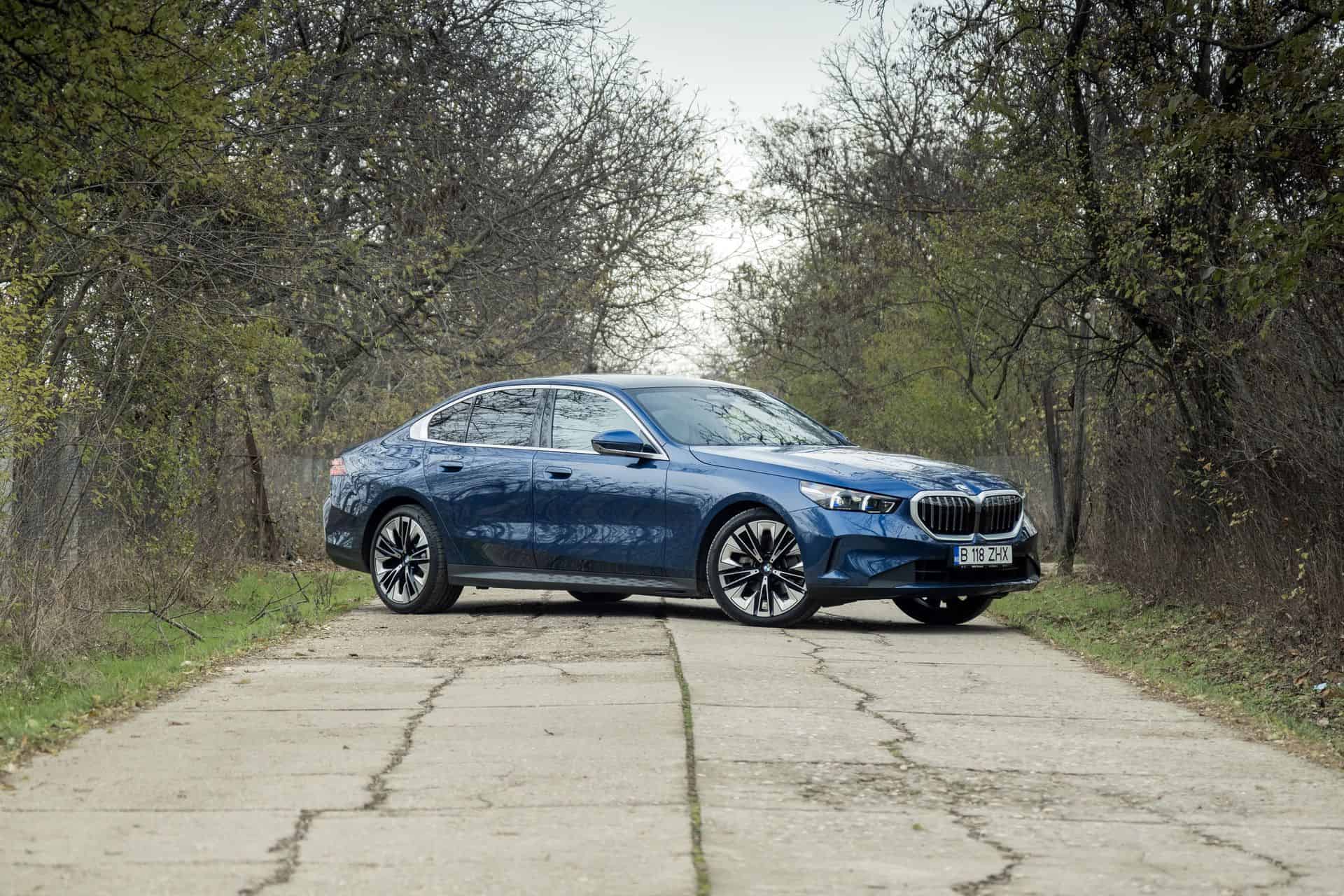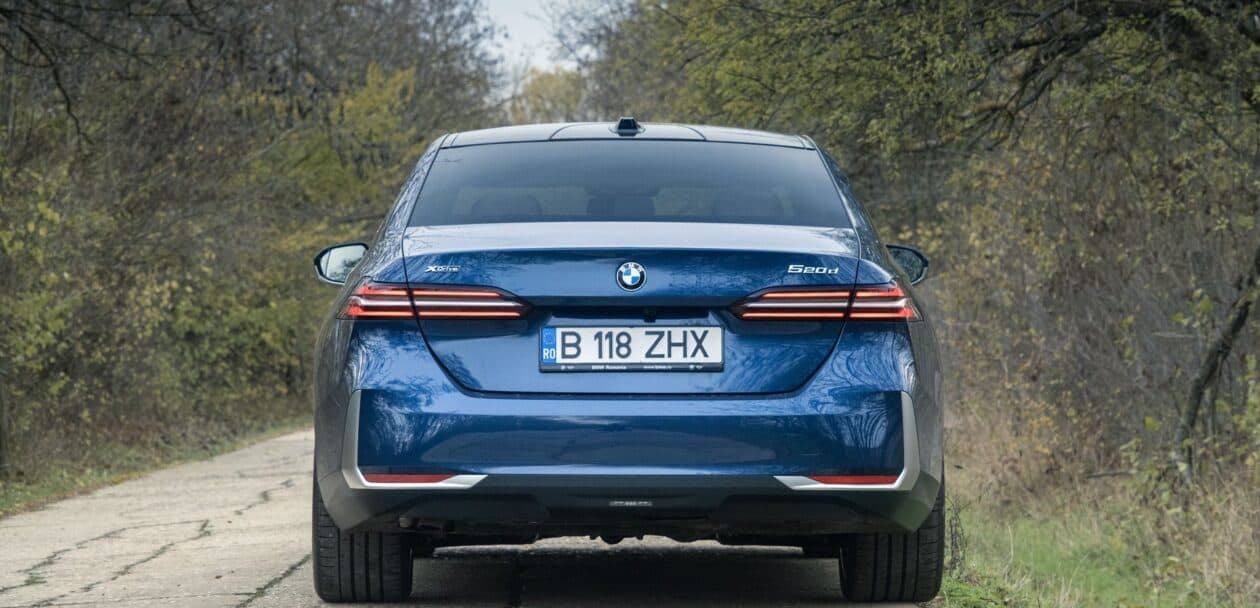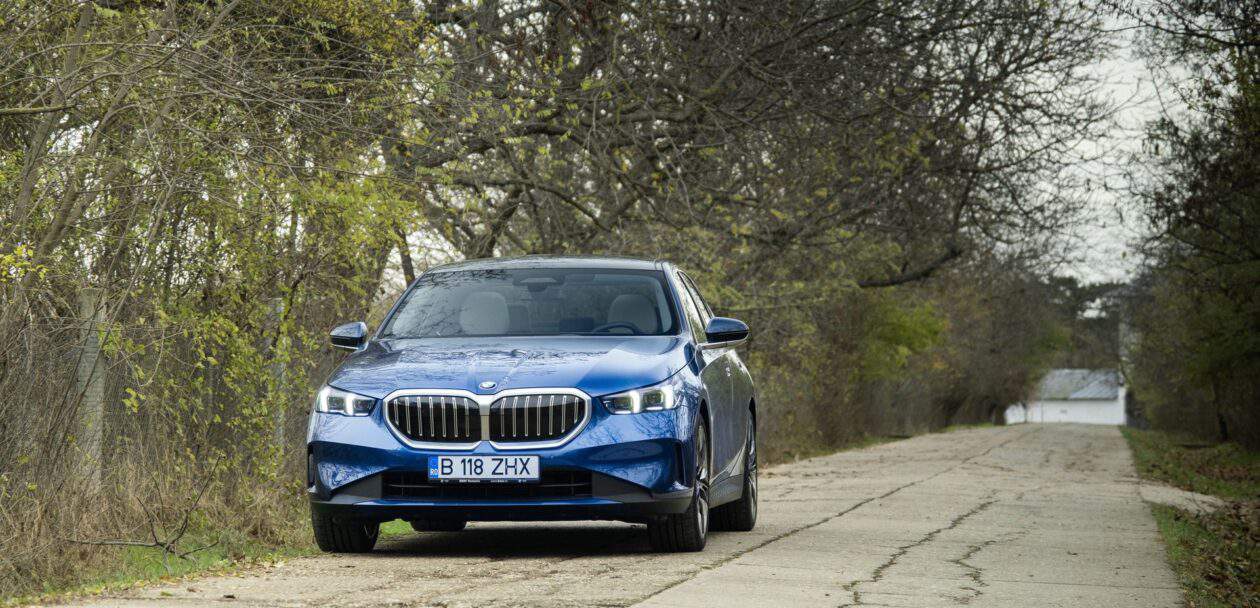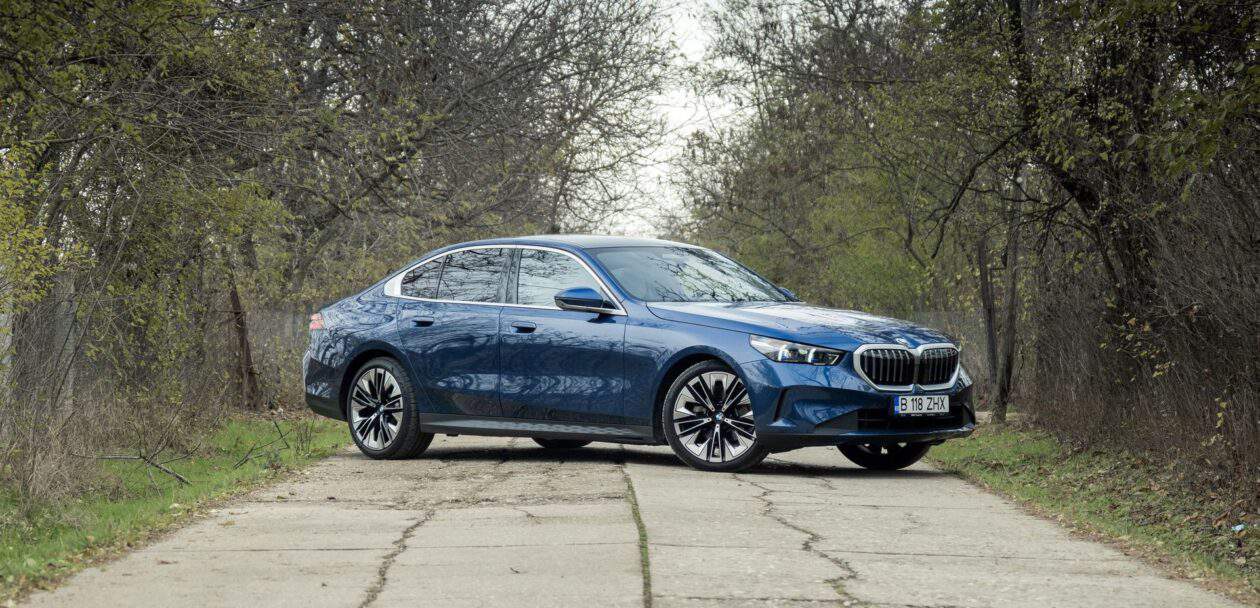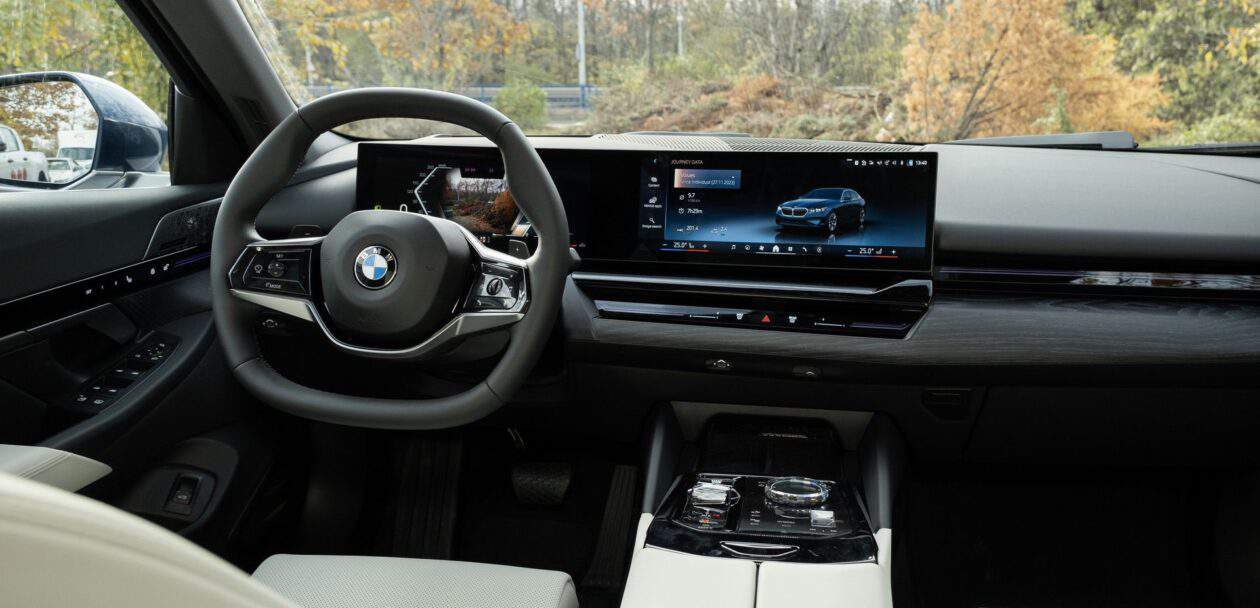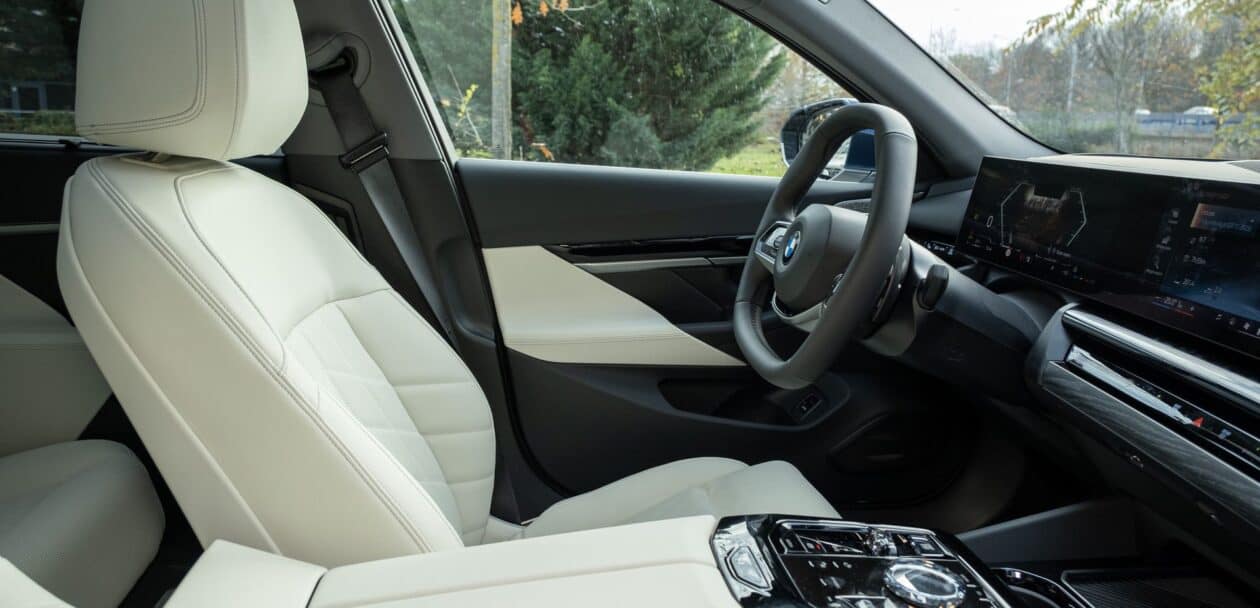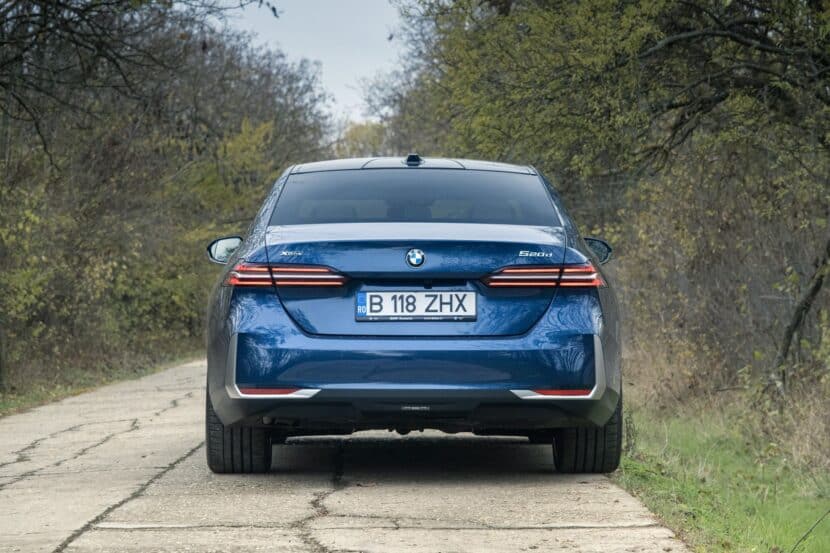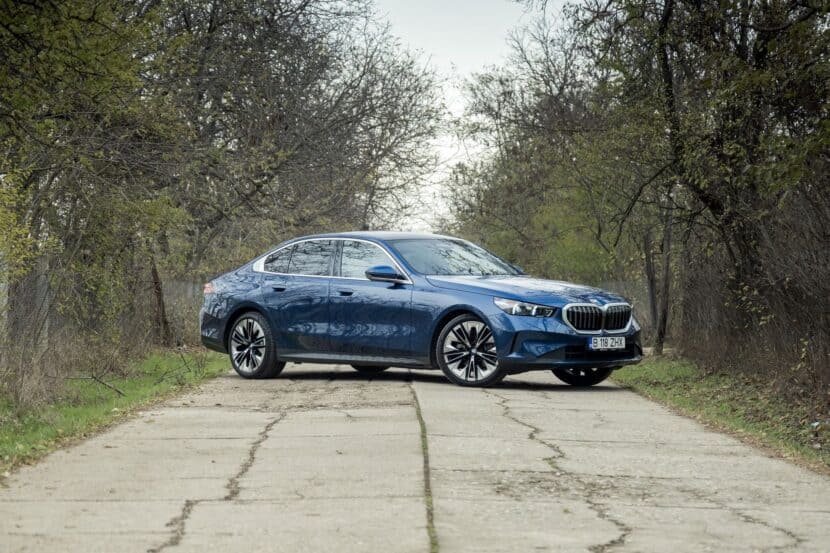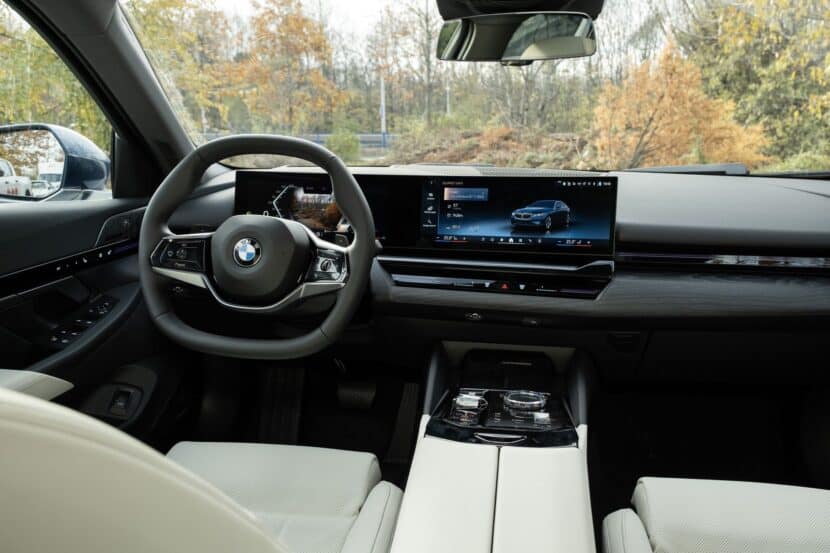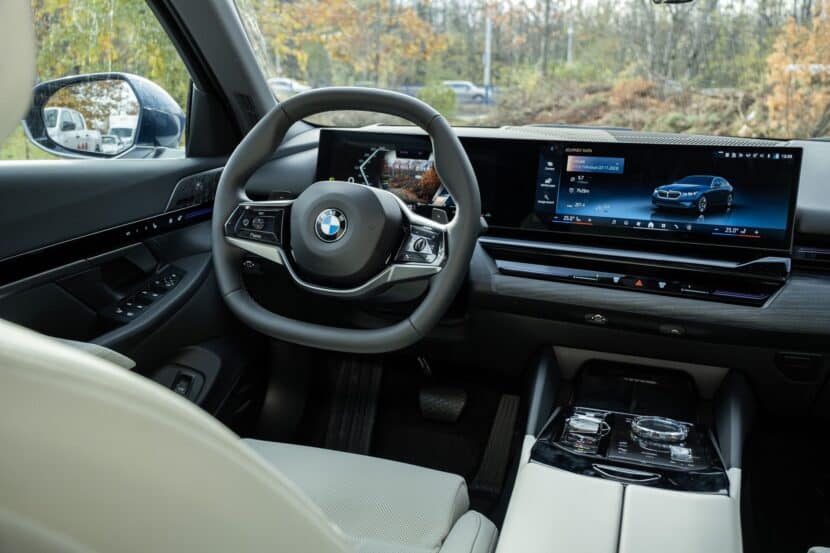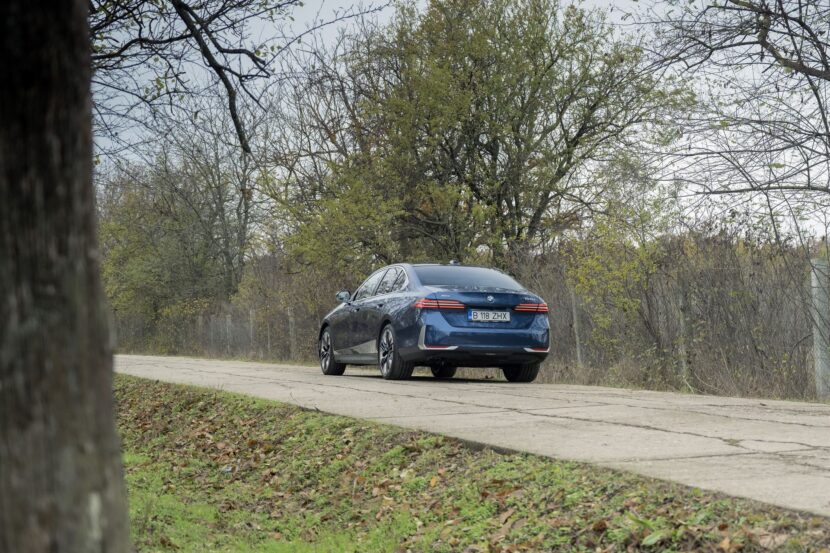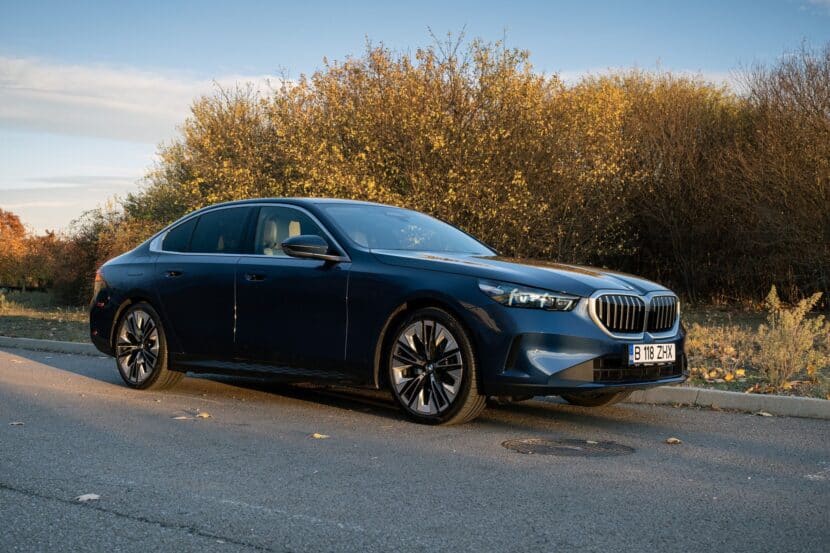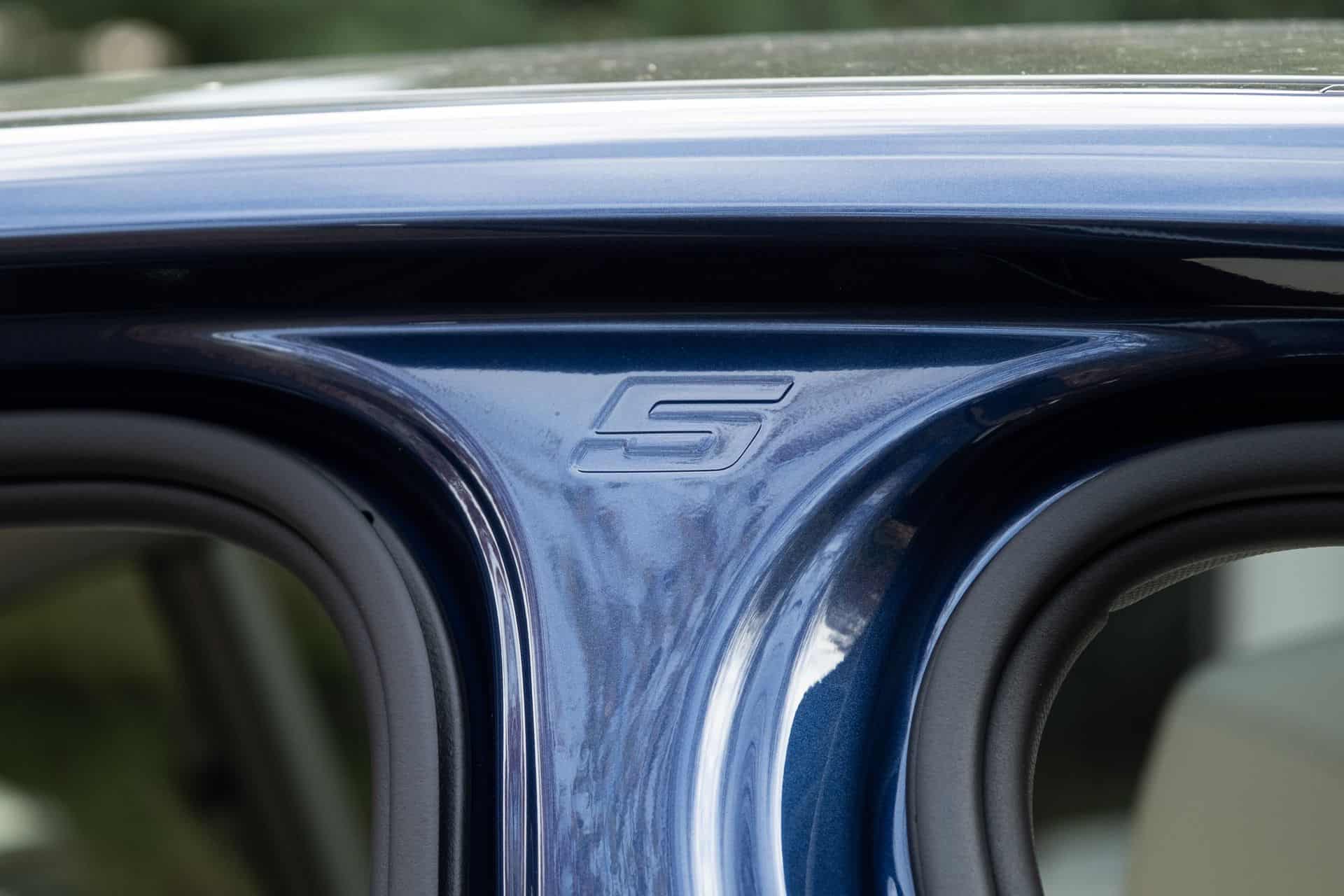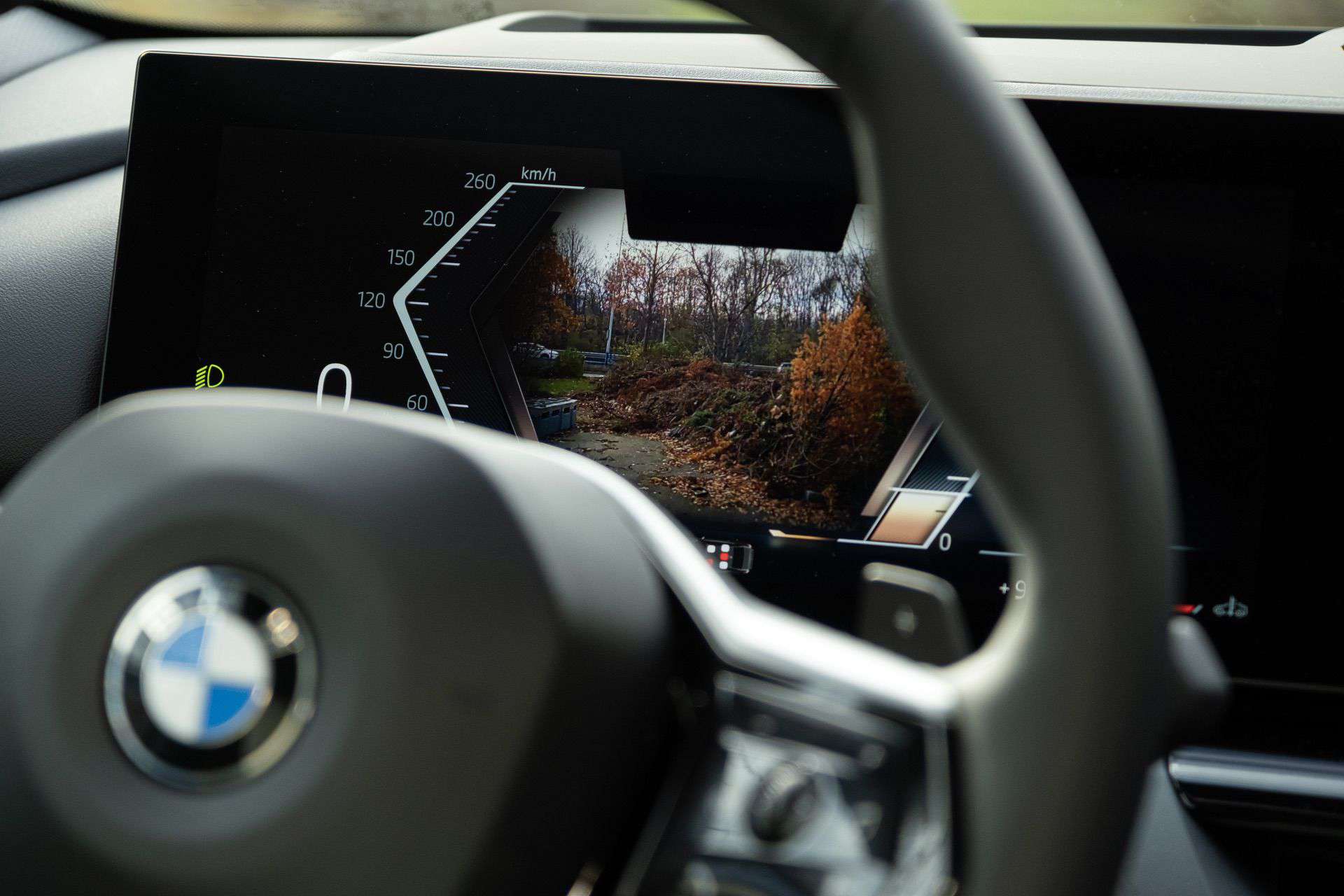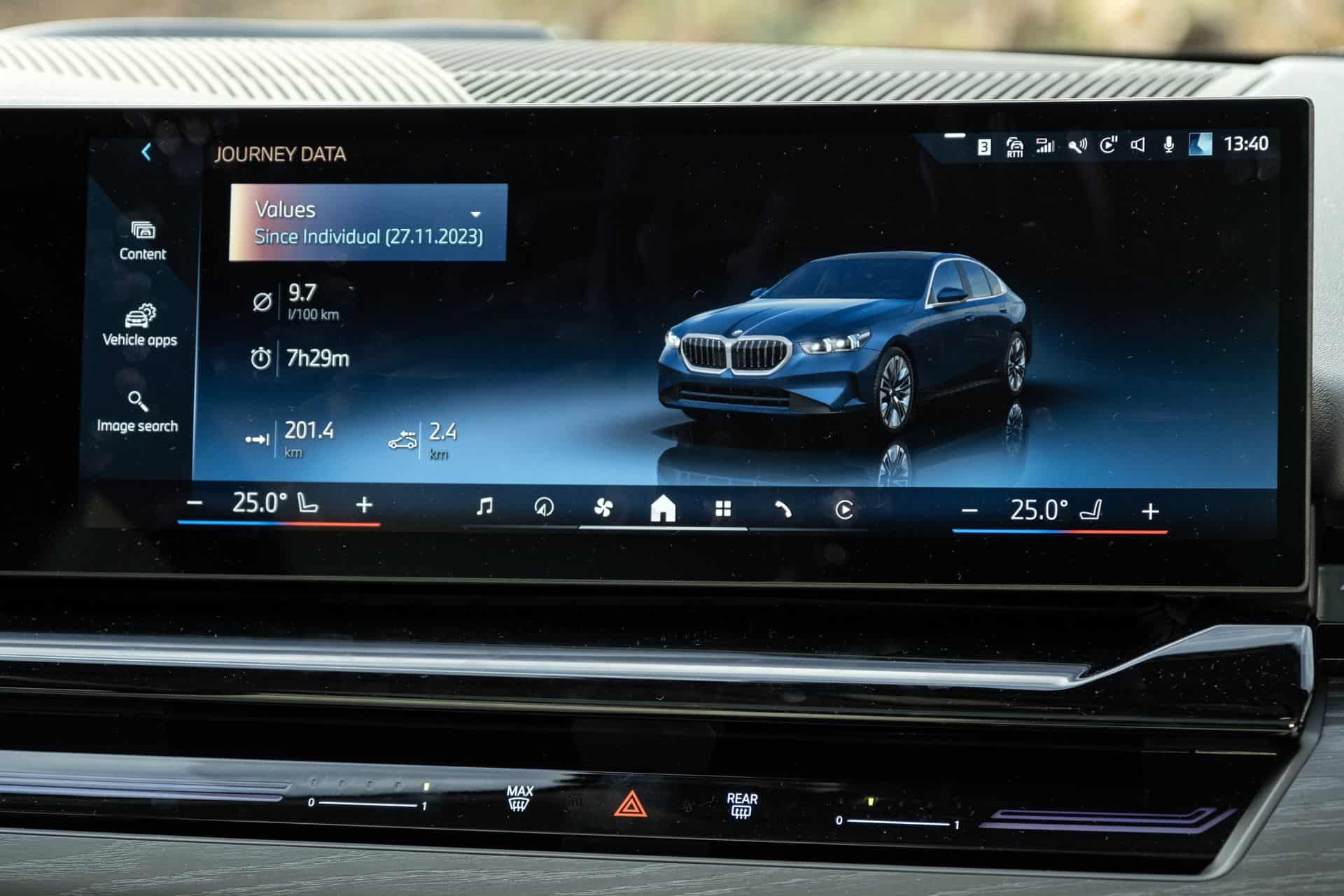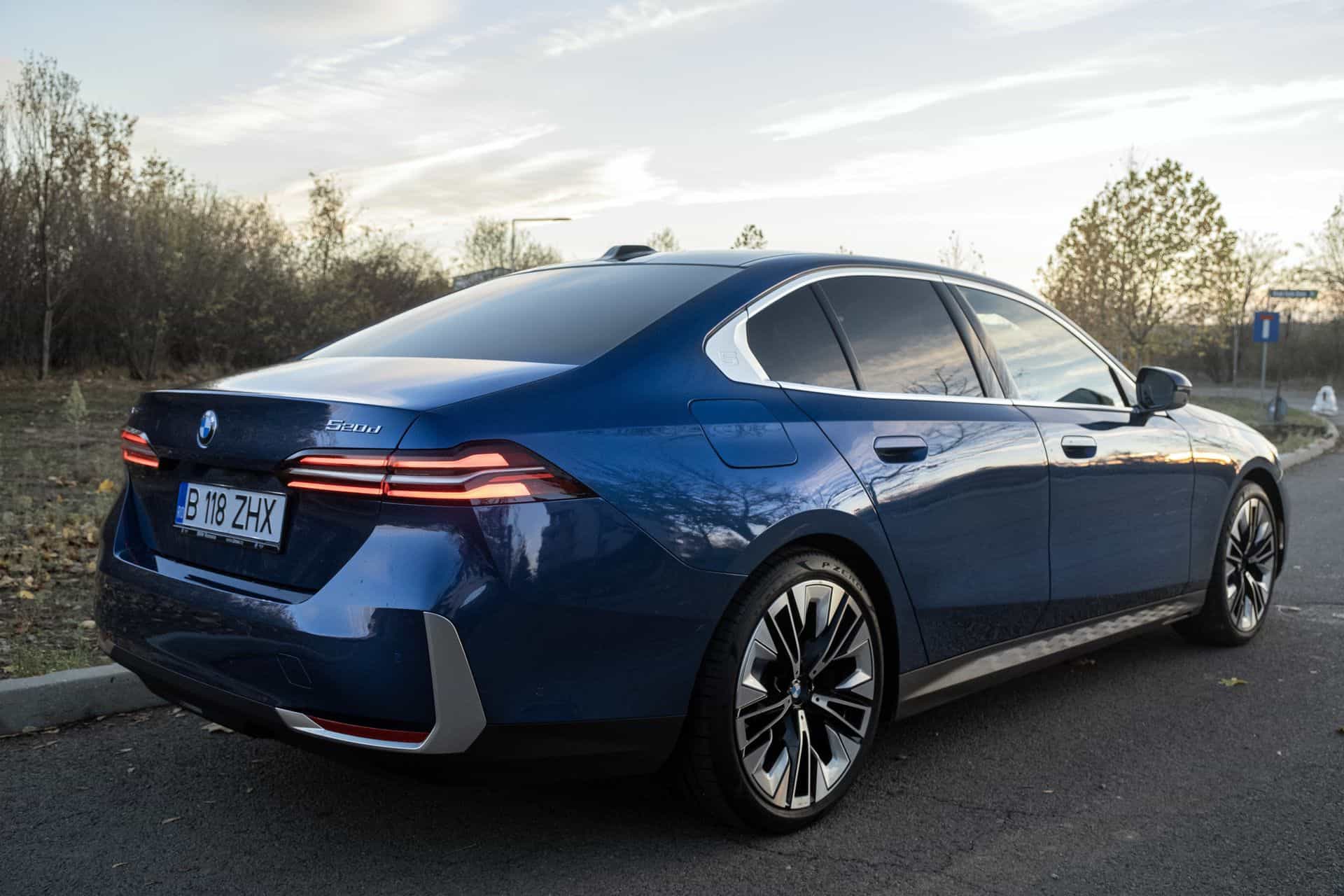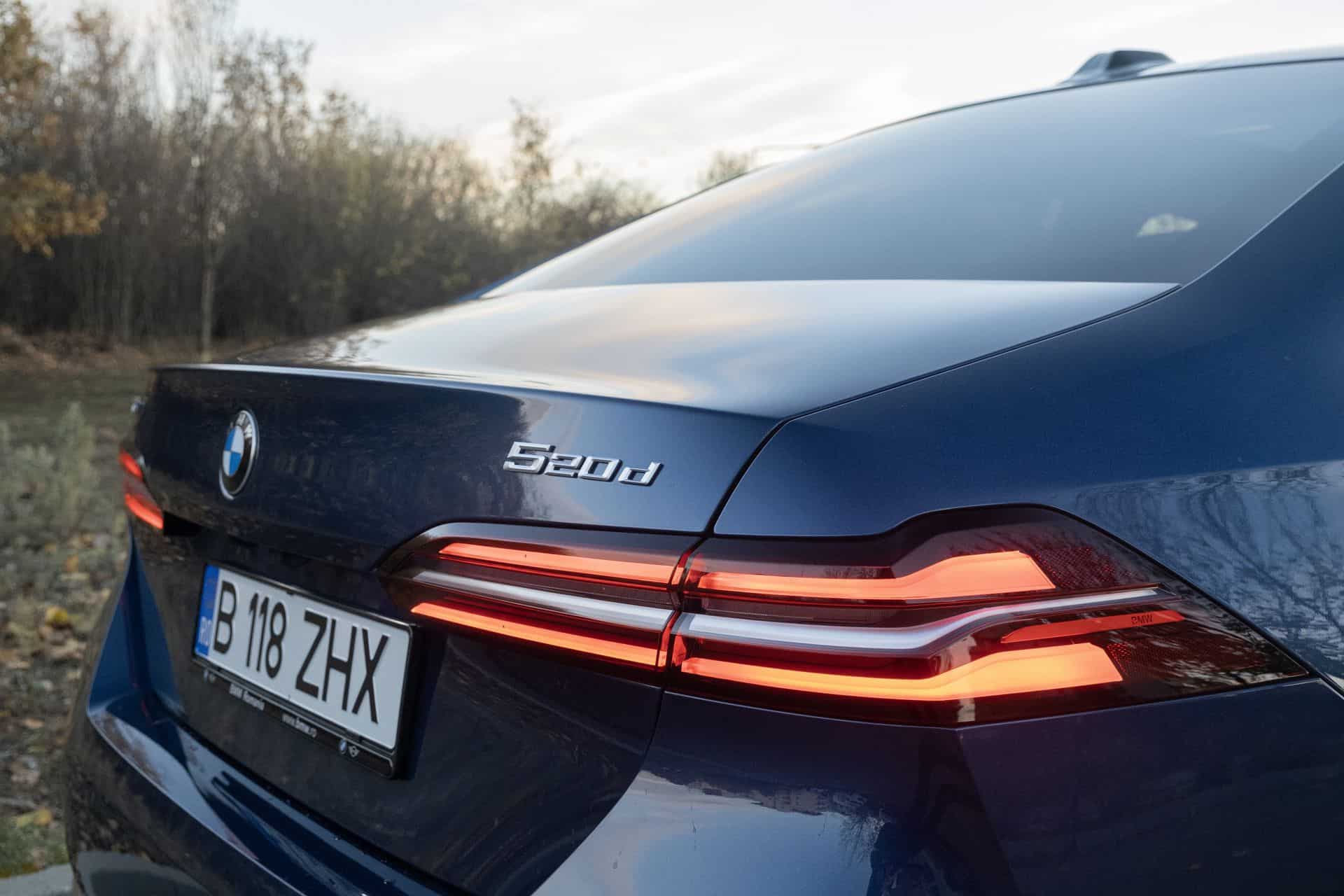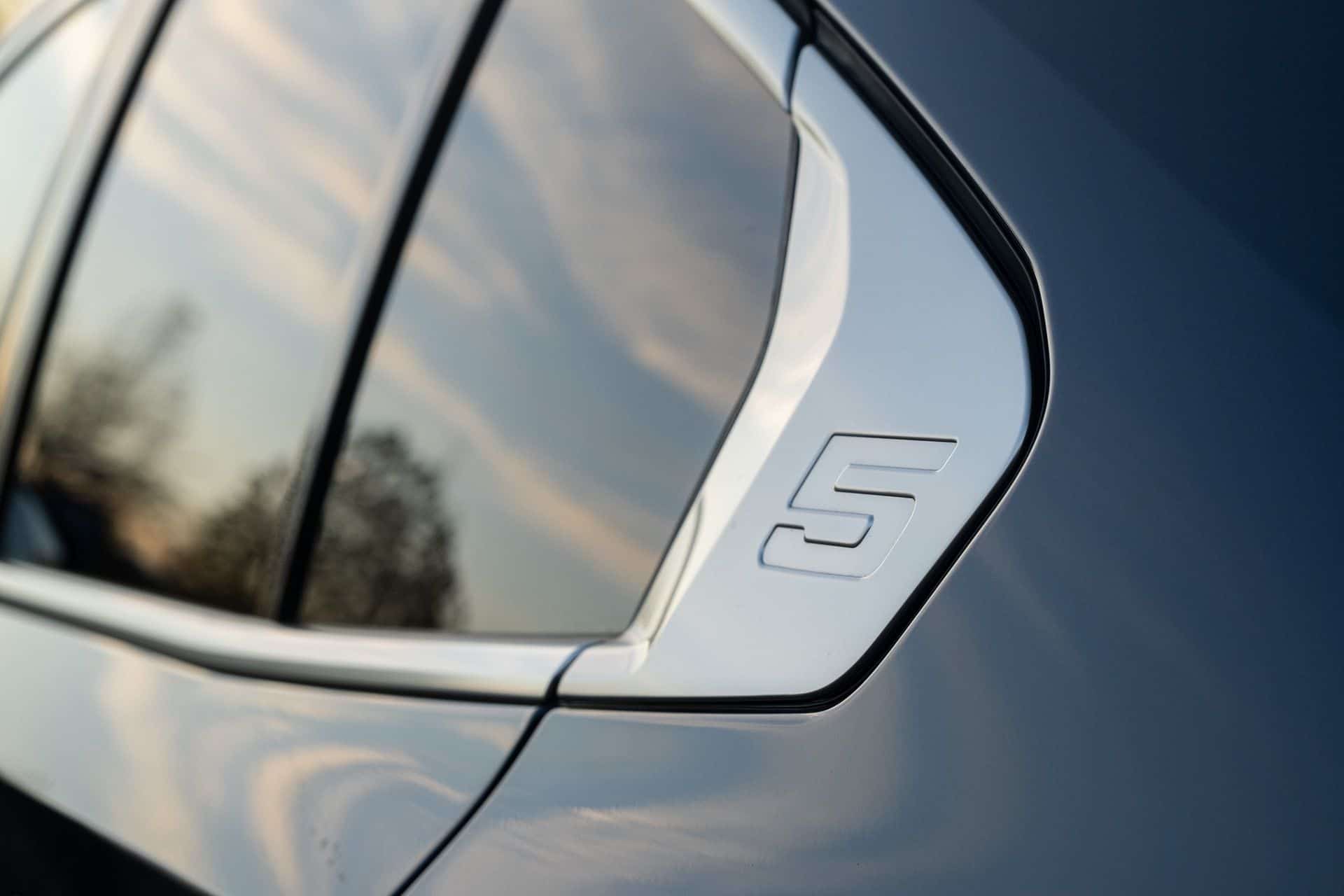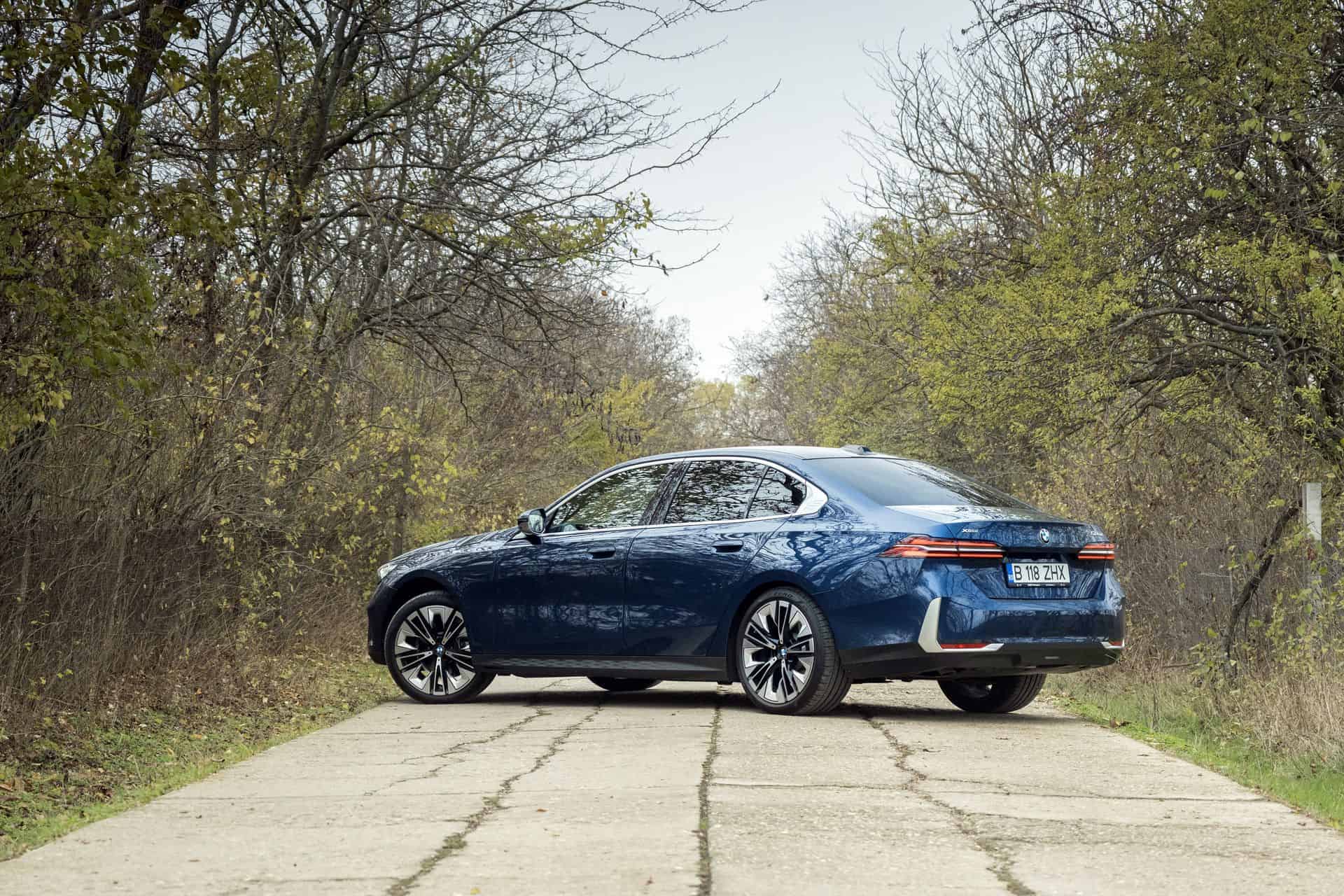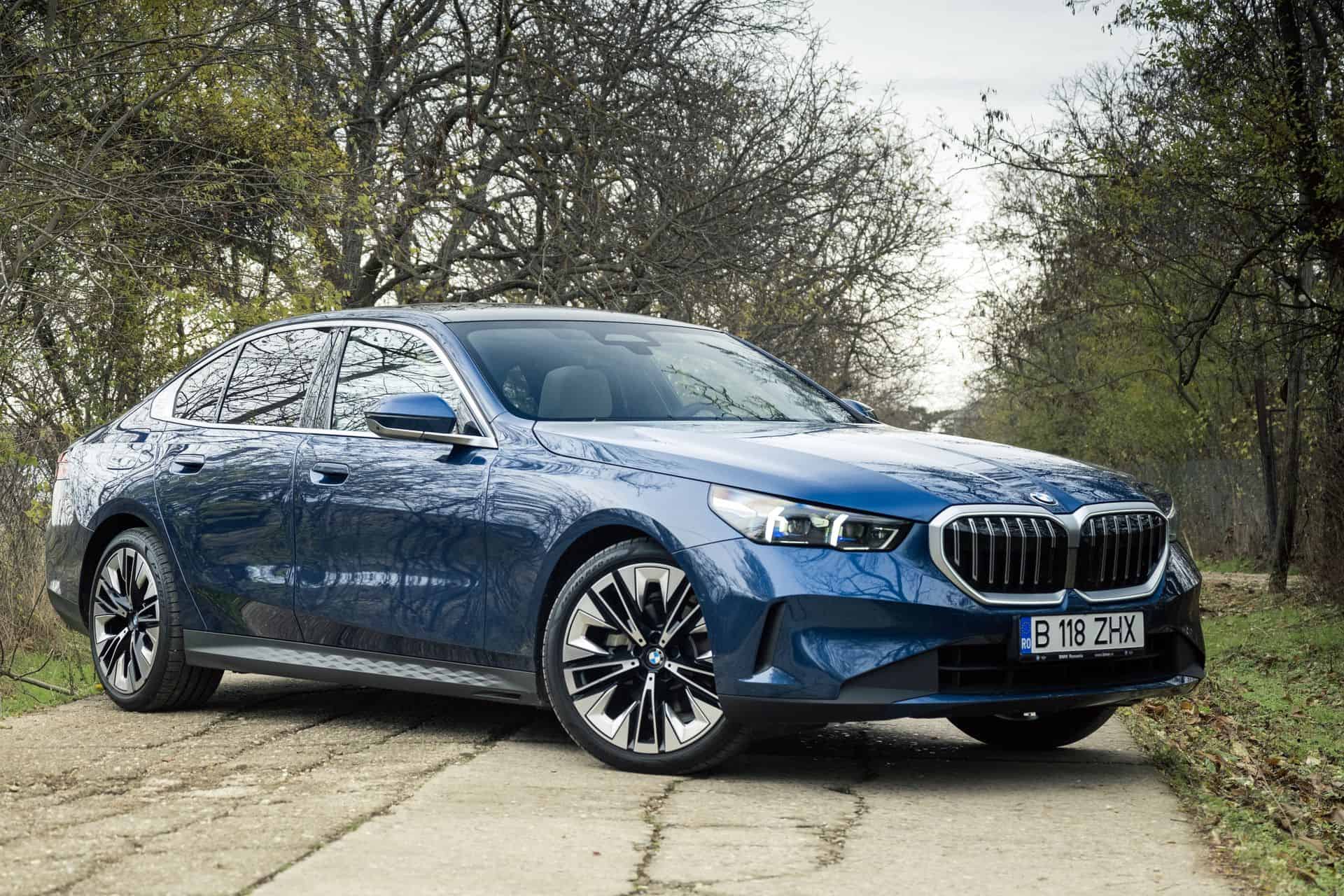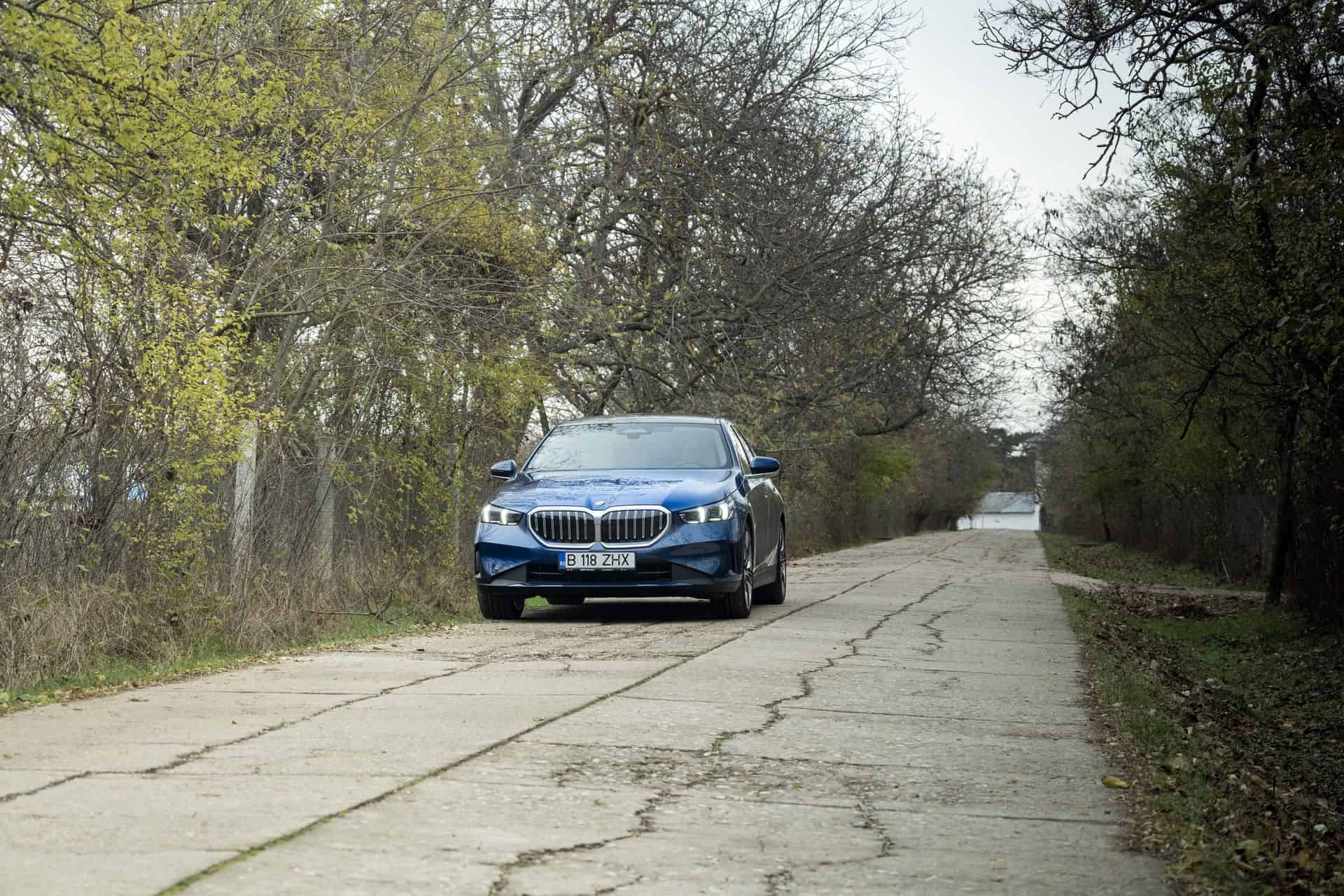BMW is still investing in diesel engines, and in Europe, it has kept offering them in many models, including the brand new G60 5 Series, which can be had as the entry-level 2024 BMW 520d. The manufacturer has kept incrementally improving its range of diesel mills to keep them desirable in Euro buyers’ eyes, going against the industry’s strong trend to move away from diesel in favor of hybrid or fully electric power.
Diesel engines are nowhere near as common in new cars in Europe as they used to be even a decade ago, and some models that used to be defined by diesel engines on the Old Continent can today no longer drink from the black pump. Many manufacturers still offer them, though, and BMW is one of them, which is excellent news because its diesels are fantastic, even its entry-level units.
The G60 BMW 520d may look like a radical departure from its predecessor, the G30, but it is powered by a development of the familiar B47 four-cylinder turbo mill, which in its latest incarnation has a revised mild hybrid system that brings some advantages to the car’s refinement and drivability.
The Four-Cylinder Diesel Still Makes Sense in Europe
Opting for the brand new G60 5 Series in 520d form won’t condemn you to life in the slow lane. Thanks to the light electrification of the mild hybrid, the mill now makes almost 200 horsepower, and even though the G60 is around 100 kg (220 pounds) heavier than the G30 it replaces, BMW gives almost identical naught to sixty times for the new and heavier car. With 197 horsepower arriving at 4,000 rpm and 400 Nm (295 pound-feet) delivered flat between 1,500 and 2,750 rpm, the G60 520d will hit 100 km/h (62 mph) in 7.3 seconds. The acceleration figure is the same regardless of whether you specify xDrive or not, and the same goes for the claimed efficiency figures, which also don’t change if you add all-wheel drive.
I was impressed by how smoothly the car was able to restart its engine (both after the stop-start system’s intervention or even starting the car up from cold) since it no longer has a traditional starter but a more powerful integrated starter generator courtesy of the mild hybrid tech. It runs on a 48-volt electrical system supplied by a 0.48 kWh lithium-ion battery pack, and it not only provides the smoothest engine starts you have ever experienced (especially in a diesel), but it also gives extra torque for short bursts of acceleration.
2024 BMW 520d
Good
- Good fuel efficiency
- 48 Volt mild hybrid
- 7 Series vibes
Bad
- Steering feels too light
- Expensive for an-entry level diesel
- Questionable exterior design
Impressive Fuel Consumption
BMW says a 520d should use no more than 5.6 l/100km, or 50.44 US mpg, but during my time with the car, my 520d xDrive tester averaged just under 10 l/100km, or 23.5 mpg. Most of my driving was done in town, though, and I didn’t try to drive it efficiently, so the figure is pretty good. Driving it constantly at around 114 km/h (70 mph) on the highway, the vehicle was showing an instant consumption of around 5.5 l/100 km, or 42.8 US mpg.
Even with a relatively small 60-liter (15.85 US gallon) fuel tank, a 520d (xDrive or not) should still be able to squeeze over 1,000 km (620 miles) out of a full tank driven mostly out of town. This is where the diesel’s appeal stems from: you can cover vast swathes of the continent’s highways very frugally, and thanks to the engine’s torque rating, it feels muscular and eager to pull even at low rpm.
Don’t get me wrong, though. The 520d xDrive feels reasonably quick pulling away, but its acceleration noticeably tapers off when you put your foot down at higher speeds, like from 160 km/h to over 200 km/h (99 mph to 124 mph). It does feel capable of reaching its maximum speed of 233 km/h (144.8 mph), but you will need a long stretch of empty autobahn (and maybe a bit of tailwind or a slight downhill section) to get there.
There’s no getting away from the fact that compression ignition is powering the car, especially when the engine is cold or at idle. It’s better than before, though, and BMW has done a remarkable job of isolating the cabin from the harshness and vibration of a four-pot diesel. Even with this entry-level power plant that lacks the smoothness of a six- or eight-cylinder configuration, the new 5 Series still feels like a proper mini 7 Series.
7 Series Vibes
The BMW G60 5 Series has grown in all directions compared to its predecessor (even in height because it needed space in its belly for the i5’s battery packs). It is just shy of 10 cm (4 inches) longer overall, and thanks to a slightly longer wheelbase, it provides more interior room too. Its almost 3-meter (118-inch) wheelbase makes it about the size of a short-wheelbase F01 7 Series from ten years ago.
It’s worth noting that my tester had the optional rear-wheel steering, which can turn the rear wheels by up to 2.5 degrees in the opposite direction to the fronts to aid with low-speed maneuverability. This makes the G60 feel very small and nimble, and I was impressed by how natural the rear axle’s steering intervention felt—this is the first car ever where I’ve actually enjoyed feeling the rear steer as it bestows the car with remarkable agility.
This feeling of agility is also helped by the fact that the variable-ratio steering feels very quick and sharp. However, the steering doesn’t seem to offer quite as much feel as in the G30, and it doesn’t instill quite as much confidence through the corners as the outgoing model.
The biggest problem I had with the steering was that it felt too light and disconnected in Personal mode. It frankly felt like a Mercedes in this respect (which may not be a bad thing for its role as a cruiser). That may be fine when you’re maneuvering through town, but show it a few corners, and you will immediately feel the need to put the car in Sport mode to make the steering feel more weighty and give you the kind of confidence that you need to attack corners at higher speeds.
The G60 2024 BMW 520d somehow didn’t feel like it wanted to be hustled, promoting a more relaxed character instead. This may be different in versions with more powerful engines, the M Pack, or the optional active antiroll bars, but my tester felt like all it wanted to do was cruise while mindful of how much fuel was being used in the process.
Lovely Interior Is 7 Series Big
BMW has ditched most traditional interior design cues for the G60 and produced a very modern and minimalist interior. It’s removed the physical climate controls, all the vents for the climate system are now hidden, and there are generally far fewer buttons than before. Functions have been grouped into menus dedicated to seat comfort, lighting, car settings, driving modes, and others.
The curved twin-screen array that pairs a 12.3- and 14.9-inch screen now runs a revised iteration of the BMW operating system, now version 8.5, which brings some notable improvements. The biggest one I noticed was the grouping of some shortcut buttons in the lower part of the screen. They give you direct access to media functions, navigation, climate controls, the app screen, and the phone menu.
They are always present in the lower part of the screen and they make for a considerably better user experience than before (BMW calls this “Quick Select”). The app screen you have to scroll through is still far from perfect, but at least you can set your most frequently used apps as shortcuts that you can easily access via a drop-down menu from the top of the screen.
Wireless Apple CarPlay worked flawlessly over the few days that I had the car, although on a couple of occasions, the screen felt a bit laggy and slow to respond, and it took a few minutes to work properly again. I also used the BMW voice assistant for several functions, and it did a surprisingly good job of understanding my natural speech and activating what I had asked for in the way that I had asked for it.
The steering wheel is no longer a wheel in the G60. The base helm has a rim that is more flat than round. It is flat at the top and bottom, but there are also flat bits on the sides, and even the part you grip when you hold the wheel correctly is flat. However, while this may look slightly unusual, it didn’t impair comfort or usability in any way.
If you want a more conventional steering wheel, which is mostly round and only has a flat bottom, you can opt for the M Sport pack.
My tester had the optional electric comfort seats. They proved really comfortable even on longer journeys, but they are less complex than the G30’s comfort seats. The ones in the G30 had a two-piece backrest that allowed for extra adjustability, and it allowed you to find a better driving position. In my experience, the seats in the G30 provided better comfort overall than the ones in the new G60, although the difference is not massive.
The Veganza faux leather that BMW is pushing with its newest models is actually pretty good. It feels more sumptuous and is an improvement over the Sensatec it replaces, and the manufacturer says it’s greener and more sustainable to manufacture too.
Even the steering wheel gets the Veganza upholstery, but it would be hard to tell it’s not real leather if you didn’t know it was artificial. I did spot some, not very high-quality feeling plastics throughout the cabin, though, such as on the entire lower parts of the door cars, the panes around the window and mirror controls, and the indicator and wiper stalks (which felt especially cheap and low-quality).
The experience of being in the back of a G60 is really pleasant, though, thanks to a very large rear bench that doesn’t push your knees up too much (which is the case with some similar sedans). Drop the armrest, and two passengers will easily be able to spend many hours in the back of one of these cars without it becoming unpleasant.
Exterior Design Dictated by the i5
The reason the G60 5 Series is so tall is because BMW needed to leave room in its lower part for the big battery packs that power the fully electric i5 variants. This has made the car over an inch taller than its predecessor, and this seems to have dramatically affected its proportions.
The hood and trunk lines now rise towards the greenhouse in a much more pronounced fashion than before, and the A-pillar also seems to have been pushed forward compared to the G30 (or any other 5 Series generation, for that matter). The result is a vehicle that doesn’t look as much like a luxurious executive sedan, and some have even said it looks a bit like a front-wheel drive car.
I don’t agree that it does, but there’s no getting away from the fact that the G30 had more classical proportions that many would consider prettier too. Aesthetic merit is in the eye of the beholder, though, and the G60’s design isn’t bad overall. My favorite angle is the head-on rear perspective, which highlights the car’s planted stance and wide flanks. This is further emphasized by the width of the slim rear lights, which make the car feel more grown-up than its predecessor.
I was surprised to see that none of the current BMW G60 variants have visible exhausts anymore. The exhaust is either hidden under the rear bumper somewhere or it’s not needed, as in the case of the i5 models. This is unusual for BMW, one of the manufacturers that kept clear of the fake exhaust tip trend that has swept the industry and made victims of its traditional rivals Mercedes-Benz and Audi.
It’s as if BMW is ashamed of the fact that the G60 still runs by burning liquid fuel, and having visible tips doesn’t seem to be desirable anymore; not even the M Sport variant gets them. There is a strong chance the only 5 Series variant with real exhausts will be the upcoming M5 variant.
My non-M pack tester was still attractive overall. Its Phytonic Blue paint and optional 20-inch aerodynamic wheels certainly helped it draw looks. I also liked the illuminated grille outline (Iconic Glow), which I thought was more tasteful than in the XM that I drove previously because the strip of light itself was thinner and more subtle.
Don’t Avoid the G60 BMW 520d
BMW has made an effort to keep the 520d nameplate alive for the G60 generation, and we’re happy it did. It may not be the quickest BMW, but it’s smooth, refined, punchy, and efficient. This blend of qualities will surely find favor with executive buyers who still do a lot of highway miles around Europe and want the lowest possible fuel costs for such a vehicle.
The 2024 520d will probably sell reasonably well, although since BMW isn’t pushing diesel as much as it once was, it will never reach the popularity of older diesel-powered 5 Series models. And you can very easily go overboard with the price and make it really expensive for a 520d.
In Europe, the 2024 BMW 520d range kicks off at just under €60,000, but my xDrive tester pushed the price to almost €90,000, and it didn’t have everything on it. You can, if you want, spec a 520d to cost over €100,000, which not only shows how expensive new cars have become but also that BMW has moved the model upmarket into the segment occupied by the short-wheelbase 7 Series a decade ago.
2024 BMW 520d
Exterior Appeal - 7.5
Interior Quality - 8.5
Steering Feedback - 7
Performance - 7
Handling - 7.5
BMWness/Ultimate Driving Machine - 7
Price Point - 7
7.4
BMW has made an effort to keep the 520d nameplate alive for the G60 generation, and we’re happy it did. It may not be the quickest BMW, but it’s smooth, refined, punchy, and efficient.


